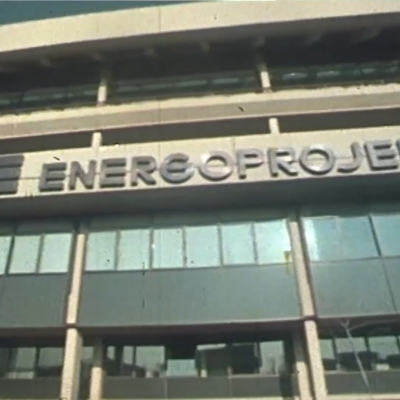We are excited to share a new lecture by Dubravka Sekulić. The lecture is based on her recently completed dissertation “Constructing Non-alignment: The Case of Construction Enterprise Energoprojekt, 1961–1989, Architecture, Construction Industry and Yugoslavia in the World”.
Dubravka was an Assistant Professor at IZK from 2016 until 2020. Dear Dubravka, we wish you all the best for your new role at the Royal College of Art! Thank you so much for letting us share this important work here.
Constructing Non-alignment: The Case of Construction Enterprise Energoprojekt, 1961–1989, Architecture, Construction Industry and Yugoslavia in the World
The foundation of the Non-aligned Movement in Belgrade, Yugoslavia in September 1961 represented a new opening, not only for a joint political representation of the countries trying to challenge and transcend the bipolar division of the world and imperialism during the Cold War, but also for the establishment of direct economic relations. The talk provides an overview of a dissertation Dubravka completed in September 2020. The dissertation addresses how the Non-alignment, as a mechanism of circulation was used by the Yugoslav construction industry. It focuses on the projects of the Belgrade-based enterprise Energoprojekt exporting architecture to Third World countries. From a transdisciplinary perspective, this dissertation follows three types of analysis: the organizational formats (of the Yugoslav construction enterprises involved with the Non-aligned countries); the organization, role, and position of the profession (architects, engineers, urban planners, etc.); and the production of spaces (infrastructure and architectural projects). The time frame considered in the dissertation is between 1961 – 1989 and the case studies covered are in Zambia, Nigeria, Uganda, Togo, and Gabon, as well as in Belgrade, Yugoslavia. Focusing on the work of Energoprojekt to read the entanglements of the periphery and pursuit of self-determination during what is called the Cold War by the West-obsessed historians, the dissertation challenges the narrative in which both Yugoslavia, as the Other of Europe, and the former colonies were the passive receivers of architectural, technical, and cultural knowledge. However, the dissertation uncovers that while not a passive the receiver of knowledge, the South-South exchange followed the modernization and developmental agenda set forth by the United Nations and the International Monetary Fund, which ultimately brought back the Non-aligned states under the control of the superpowers.
This dissertation is not a comprehensive history of the Non-alignment through architecture nor architecture through the lens of the Non-alignment, although it has elements of both. The first part situates Energoprojekt within the larger project of setting up self-management and socialist Yugoslavia and its construction industry. Furthermore, it examines Energoprojekt in relation to the global network established by the Non-aligned Movement and the opening it created for Yugoslav enterprises to enter the markets of member states under the motto of solidarity and co-existence. The second part addresses organizational formats that grew out of the entanglement of working in countries such as Zambia and Nigeria, and its effects on the process of design and construction. More precisely, this led to shape the principle of “total control” and the use of the architectural project as a tool to coordinate complex construction processes. The third part of the dissertation returns to the idea of the Non-alignment and looks at a series of conference centres designed across Africa as the most material witness of the collaboration that grew out of this politics. In the end, the dissertation addresses what was left behind when both the politics of Non-alignment and Yugoslavia withered away. It unfolds the global entanglements transforming Energoprojekt from a socialist self-managed enterprise into a postmodern corporation and recognizes the resonance this transformation had in its immediate environment in Belgrade.
